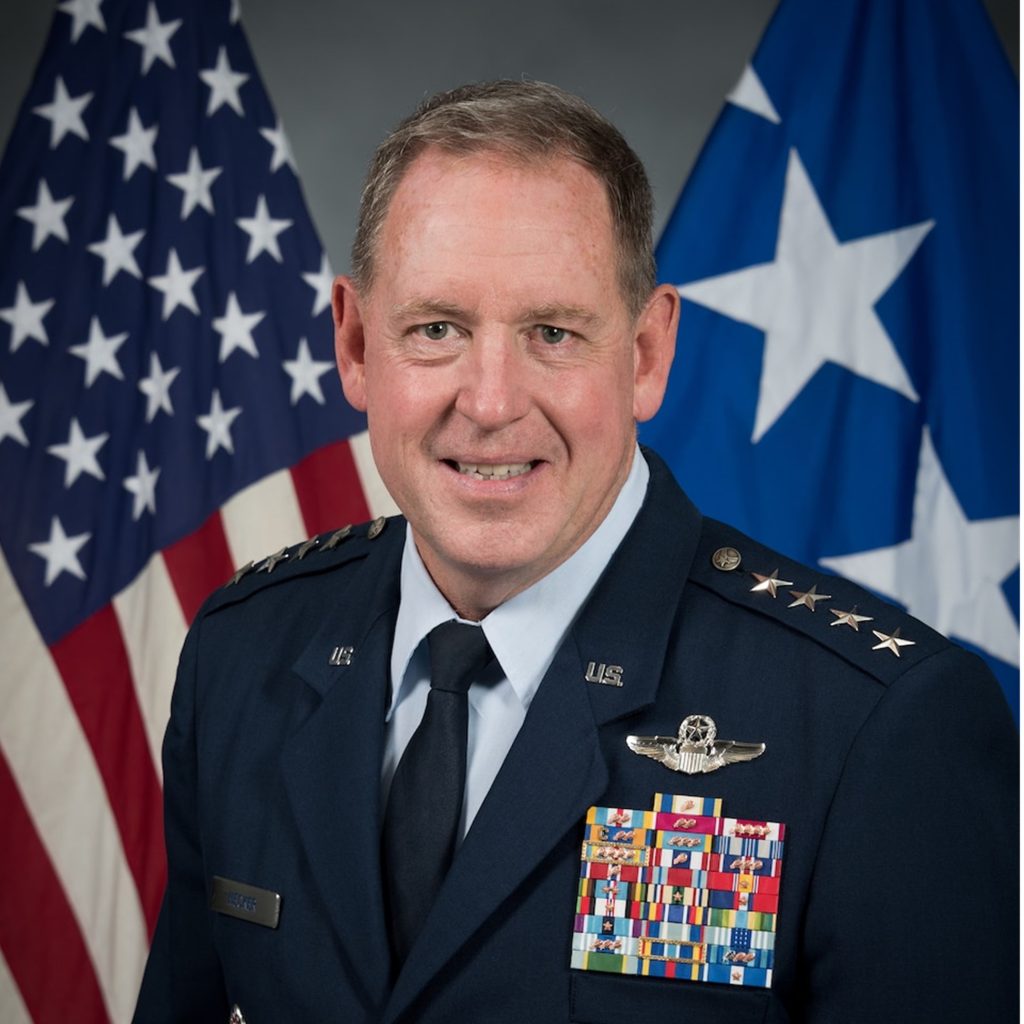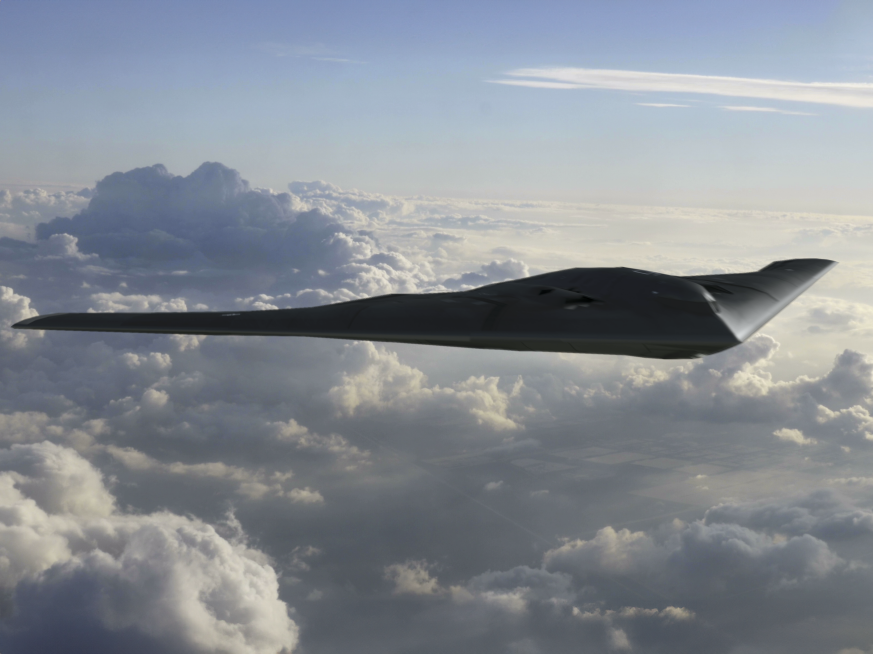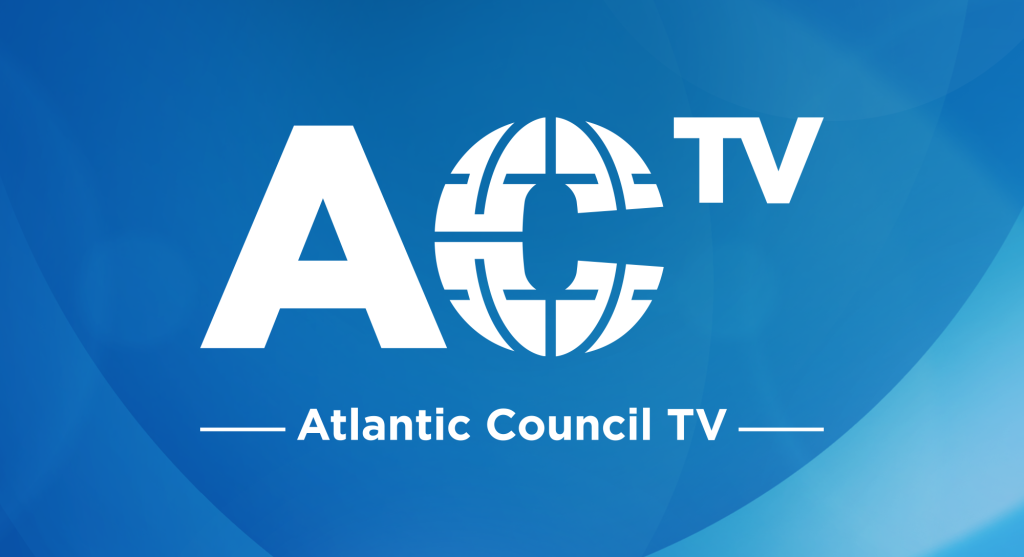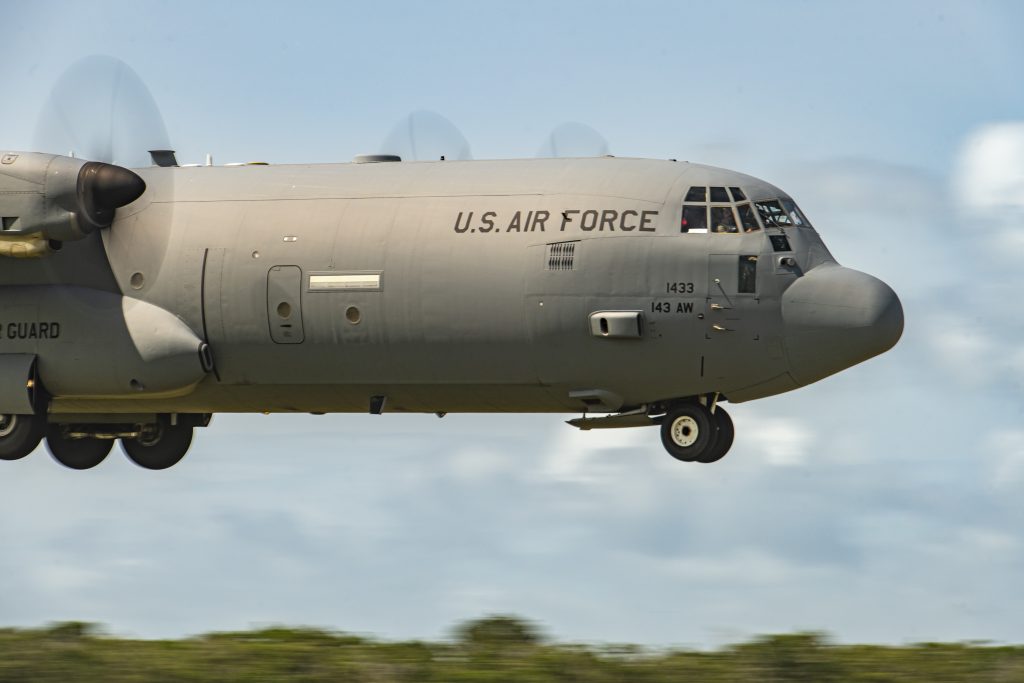As the latest installment of the Forward Defense program’s latest Commanders Series event, the Commander of US Air Forces in Europe – Air Forces Africa and NATO’s Allied Air Command General James B. Hecker joined Vice President and Senior Director of the Scowcroft Center Dr. Matthew Kroenig for a discussion about the future of US and allied airpower in the European and African theaters, lessons learned from the war in Ukraine, and General’s Hecker’s five key priorities for the US Air Forces and NATO.
Read the transcript
Matthew Kroenig: So you oversee a massive area of responsibility, home to 104 nations command US air power across 19 million square miles. What are your strategic priorities across the European and African theaters? How are the challenges in these regions distinct, and how does allies and partners play into play into all of this?
General Hecker: Well, things have been busy as you know, in both USAFE and AF-Africa. And I think I’ll start off with talking about the Ukraine crisis that started in February of 2022. We’ve looked and analyze a lot of lessons learned that have come out of that. And based on that, I’ve come up with five priorities that we need to make sure that we’re ready should we have to invoke Article five. And of course, you know, number one is deterrence. We don’t want to go to war. So all these priorities that are discuss, really align towards deterrence. So we don’t have to do this.
But the first priority and really came out of the lessons learned out of the Ukraine war was we know either side has not been able to get air superiority and we know how important air superiority has is. We’ve had it for a long time. You know, if you look back to Desert Storm, we had to fight for it a little bit. Primarily that was in the air is how we fought for it. And then we gained air superiority and we’ve had it ever since. We’ve had it through Afghanistan, largely contested Syria and all of these things.
We don’t have it now. When I say we don’t have it, Ukraine doesn’t have it, Russia doesn’t have it, and you see the kind of war that happens. If you don’t have air superiority, it’s 155 rounds going back and forth, lots of casualties, cities that are just demolished and we can’t stand for that. So to make sure that we don’t end up in that situation, should Article five be invoked, our top priority is to make sure we can do counter it to aid or anti-access aerial denial. And what we’ve seen, you know, if Ukraine tries to fly up in Russian territory, those there integrated air and missile defense systems shoots down their aircraft. Likewise, when Russia has tried to go across the Ukrainian border, they have shot down Russian aircraft, over 75 of them.
So the first priority is to make sure that we can neutralize those anti-access, aerial denial, integrated air and missile defense system that Russia has. So that’s one of our top priorities, is to make that happen. And it’s not going to be as easy as it was in Desert Storm. It’s going to require several other services besides just the Air Force. Space Force is going to be involved. CYBERCOM (US Cyber Command) is going to be involved Navy with cruise missiles and Army special operators. It’s going to be a truly team effort to make sure that we neutralize the enemy’s integrated air and missile defense system. What we’ve seen since Russia has not been able to get air superiority is the way they’re fighting is they’re sending very precise one way waves that they purchase from Iran or they’re using cruise missiles that are launched off their long range bomber aircraft. So we need to make sure that we’re prepared for that and NATO.
Our second priority is to make sure that we have a very integrated air and missile defense systems ourselves. So when they launch these kind of attacks, we’re able to shoot them down. And that’s what we’re helping Ukraine out with right now, is to make sure that they have a good integrated air and missile defense system in several countries. Over 50 countries have been donating things, and a lot of that goes towards surface to air missiles to prevent that threat.
Now, as you know, our national defense strategy, we concentrate on China, and that’s fine because a lot of the things that are developed for China, you know, we can use over in our theater as well. But what we need to make sure is that we get the most out of every partner that we have in NATO. And you know, we’re up to 31 now with the joining of Finland and hopefully we’ll be at 32 fairly soon and we need to make sure that we share information with them and they share information with us to make sure that they’re as lethal as possible. And there are several examples of where we’ve been able to do that, whether it’s mission data files on the F-35 or whether it’s points of interest that we’re allowed to give them now that we weren’t able to give them before. And this really increases the capability of the native all 31 nations. So it’s been going very well.
Our fourth priority is command and control. We need to make sure that we have a good way to command and control all of the 31 naval forces. So we’re coming up with different ideas on how we can do that. And it really comes down to distributed operations and making sure that we have a resilient, redundant communication so we can talk to our forces that are out in the field.
And then the last thing that I’ll talk about as a priority is “ACE”, agile combat employment. And what we’ve seen is in the past, we’ve had to disperse our aircraft among a particular airfield. So that’s not good enough. Now, with the precision and the weapons that are enemy’s have. So now we have to disperse our aircraft among different airfields. So we’re making sure we have that capability.
And if you remember, you know, over 30 years ago, we could take off anywhere in Europe, land at any base, be able to get gas and be able to get weapons and those kind of things. And over the last 30 years, you know, we haven’t we haven’t paid attention to that as much. We’re really starting to pay attention to that again. So those are the five priorities that I think will make sure that we can provide a deterrence so we never have to go to war with Russia.
Matthew Kroenig: So it’s a very clear set of priorities and it is to deal with multiple crises on both continents now. And I wanted to turn first to the ongoing crises in Africa, including the recent coup in Niger, the standoff with the economic Community of West African states known as Ecosphere. How have these incidents impacted US military planning and strategy in Africa? And are you working with US partners in West and Central Africa to address these challenges?
General Hecker: Yeah, we’re working with our partners there. You know, I will have phone calls with the Chief of Staff of the French Air Force to make sure that we’re trying to, you know, solve this problem diplomatically. But the last thing we want to have happen is we don’t want a shooting war over there in. The good news is we’ve been vastly successful at doing that. So with the help of the State Department, you know, when it first started out, we weren’t quite sure and we were really worried about the force protection of our folks. So we rebalanced some of our basing between airbase, one on one air base to a one. You know, to that end, just in case something bad happened.
The good news is that it didn’t. And it hasn’t. And we don’t expect it to because of the strong diplomatic efforts that the State Department has put forward. Now, we still have things that we need to do. For a while there, I think everyone realizes the airspace was closed and those kind of things. And now the airspace is starting to slowly come back up and we’re able to do some of our surveillance operations primarily for force protection in the area. So that’s helping us out quite a bit to make sure that we’re comfortable. And all the intelligence shows right now that the risk to our forces is fairly low. But we need to make sure that if something happens, we’re ready to go. And if we’re called upon to evacuate the embassy or American citizens, that we’re ready to do that. And we’re in a good position now that they’re starting to allow us to use some of our surveillance for force protection against.
Matthew Kroenig: So turning to the other major theater in your area of responsibility and the war in Ukraine. Last month, the United States approved Denmark and the Netherlands to send F-16 fighter jets to Ukraine. How do you think F-16s will affect the Ukrainian military’s progress in the counter offensive? Are they going to be a game changer?
General Hecker: I wouldn’t say it’s going to be a game changer. It’s not going to be the one thing that all of a sudden Ukraine is going to gain air superiority. As I mentioned earlier in my comments, it’s going to be hard enough for 31 nations to go against A2/AD. So to expect one nation to do that and think that an F-16 is going to turn the tide. It’s not going to be the case, but it does help them modernize their military. And we think about this as a long game.
You know, they’re going to get some F-16s, you know, here in the future, but they’re going to need some other things to go along with those F-16s. And they’re not going to take an F-16 with some training and all of a sudden be as good as people that have been flying the F-16 for ten years. It takes some time to learn the tactics, techniques and procedures, but it definitely will help because a lot of the weapons that we have provided Ukraine, whether it be the hard missiles or JDAM extended range, those are being retrofitted to a MiG 29 aircraft.
So the interoperability is not near as good as it’s going to be when they get an F-16 and then they will be able to do more with the weapons that we provide them. So it’s definitely going to help. But in the short term, a little bit in the long term will even be better off. But it’s not going to be a game changer overnight.
Matthew Kroenig: That makes sense. And so Ukraine’s advancing its air capabilities. The US Air Force is also upgrading its capabilities with fifth generation aircraft. And you talked about this already a little bit in your priorities, but maybe we could dig in a little bit more. How is the Air Force evolving its approach to air warfare as it watches what’s happening in Ukraine and what are the technological best we’ve done a lot of work on emerging technology here in the Scowcroft Center. What are some of the technological bets that you think that can help the United States maintain air dominance into the future?
General Hecker: Well, there’s quite a few things, but we’re definitely going to school based on what we’ve seen from Russia. And one of the big things that’s my number one priority is counter A2 AD. And what we were able to do is we brought in several senior captains, junior majors that were experts in their field. We brought them to Ramstein from all 31 nations, and we gave them two weeks to figure out how to best go against the counter to the mission. And they put together, you know, packages, you know, this many aircraft, this type of aircraft, this mini jammers, this cyber effect, this space effect, how the Navy is going to integrate with this, as well as the Army. And we came up with a plan for how we’re going to get after this.
And we’re not just going to stop there and do that. On just this one plan, we’re actually going to go out and exercise that plan. So we’re going to do it first in small pieces. So we’ll take a chunk of the plan and we’ll exercise that. And then we have a culminating exercise that is going to occur in the fall of 2024. It’s called Ramstein Flight, similar to the red flag that we’re going to have and that’s going to be held in Greece.
We’re going to do that and we’re going to get all of these players together and we’re going to actually exercise it live, fly it with other services, as well as SPACECOM and CYBERCOM assets, and do it for two weeks and we’ll get very proficient and this, I think, is going to provide a very good deterrence and good a very good capability that NATO will be able to take down the Russian integrated air missile defense at scale as opposed to just, you know, hit one area we can do, you know, simultaneously with the help of the 31 nations.
And the good news is for us and NATO, since the invasion of Ukraine, we have had a vast increase in F-35 sales, which is really a big player when it comes to kind of ready to aid. So far, we’ve had three countries sign the log that they’re going to buy of 35 aircraft. Finland newly join is going to buy 64 of them, 36 from Switzerland and 35 from Germany. And in addition to that, we have five other countries who will soon sign another way and then two other that are interested. So that’s ten different countries, which will give us probably a little over 635 in the next decade. And of those, you know, only 54 of them are going to be US. The others are bought and paid for by our European partners in NATO. And we’re making sure that we’re sharing information with them to make those aircraft as capable as possible.

The Commanders Series, generously supported by Saab, is the Atlantic Council’s flagship speakers’ forum for senior military and defense leaders.
Featuring

Gen James B. Hecker, USAF
Commander, US Air Forces in Europe – Air Forces Africa, US Department of Defense; Commander, Allied Air Command, NATO
Moderated by

Forward Defense, housed within the Scowcroft Center for Strategy and Security, generates ideas and connects stakeholders in the defense ecosystem to promote an enduring military advantage for the United States, its allies, and partners. Our work identifies the defense strategies, capabilities, and resources the United States needs to deter and, if necessary, prevail in future conflict.
Atlantic Council TV

Watch this event and more content on ACTV
Follow the conversations shaping our world. Available on all major platforms.

